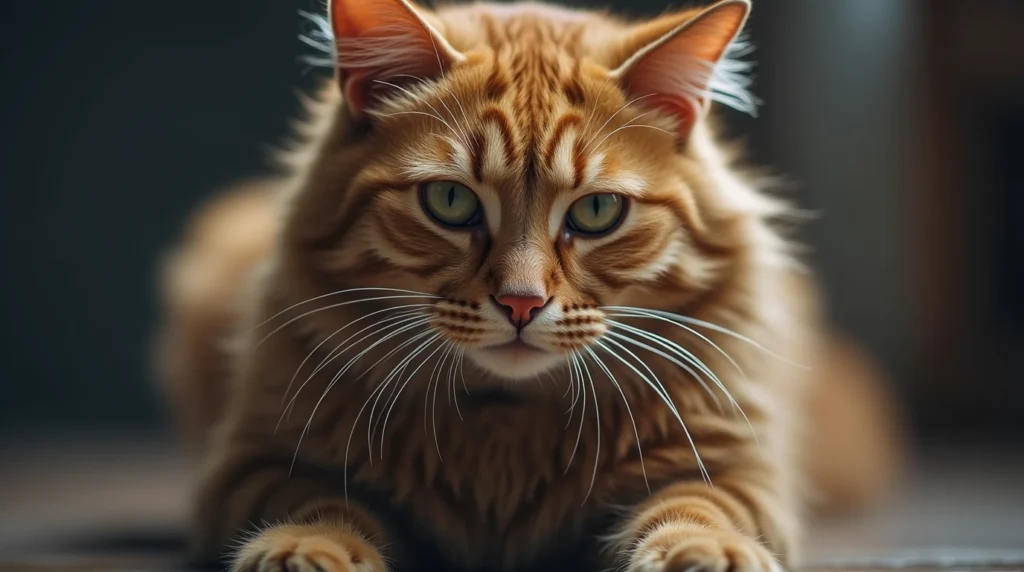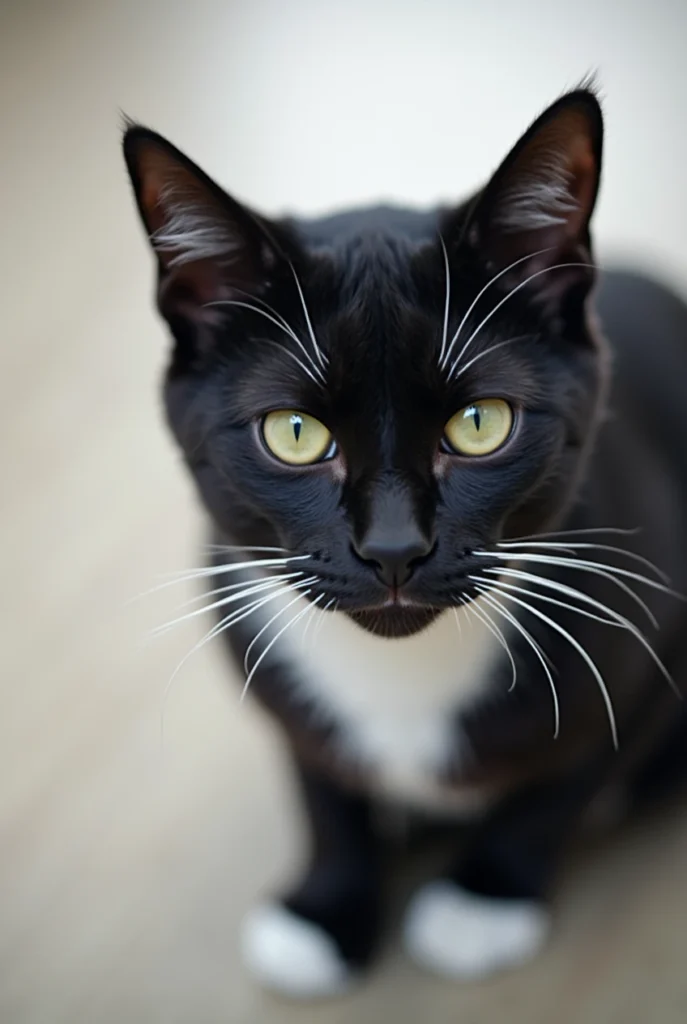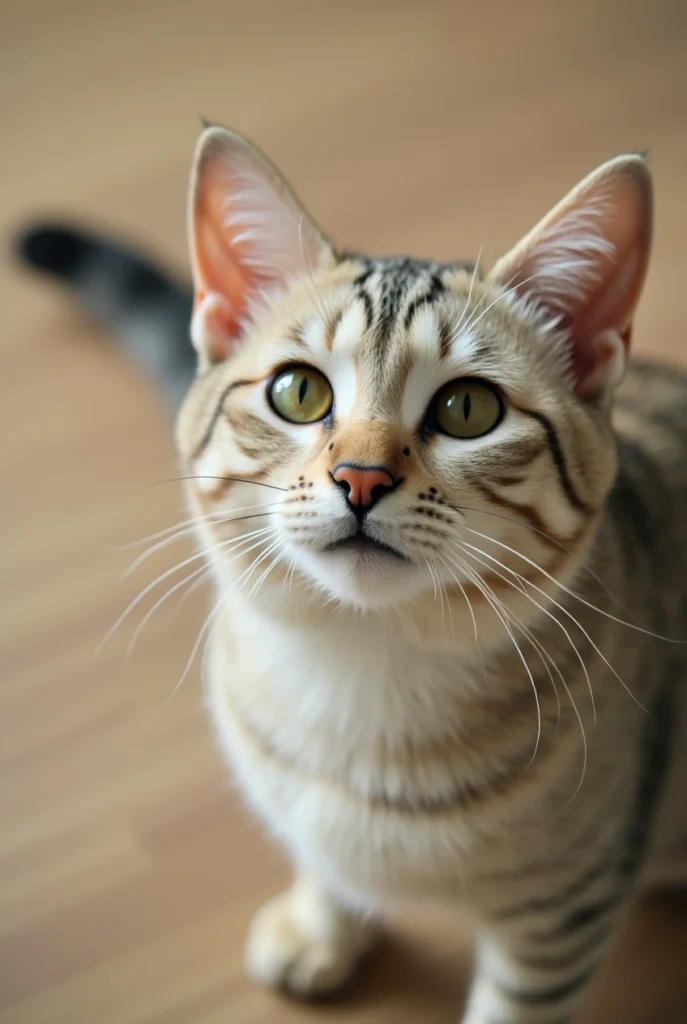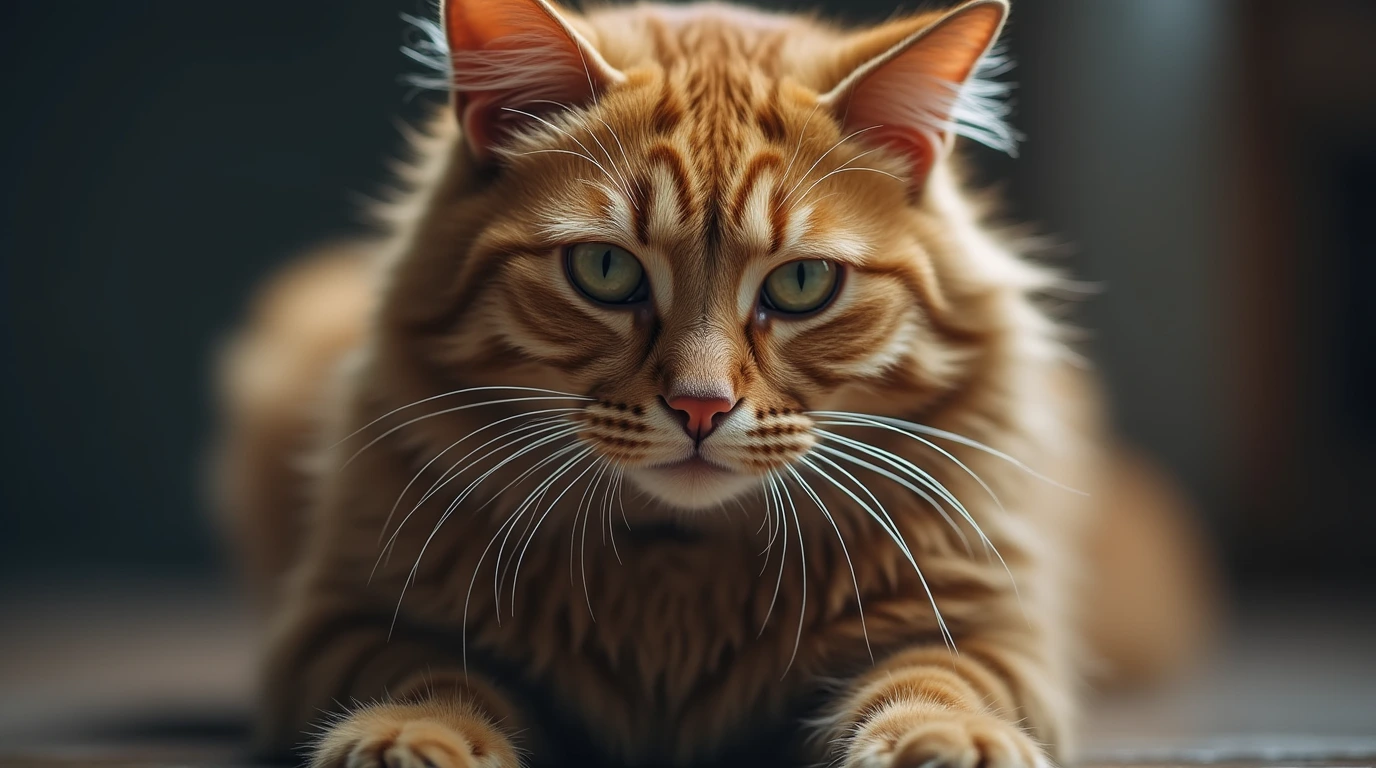Ever looked at a newborn kitten and thought, “Wait… why does their fur look like it’s been dusted in silver or dipped in ash?” That’s not a trick of the light — it might be something called a fever coat.
Fever coat in cats is one of those oddly poetic names for a phenomenon that’s equal parts fascinating and harmless. It shows up when kittens are born with fur that looks dramatically different from what you’d expect based on their breed or lineage. Think smoky greys on a cat meant to be jet black, or patches of silver across a tabby’s back. But don’t panic — this isn’t a health emergency. It’s more like a curious genetic whisper from a stressful moment during their mother’s pregnancy.
Most cat owners stumble onto this term when they’re frantically Googling strange fur patterns on their newborns, unsure whether it signals something serious. Here’s the thing: fever coat is temporary, non-threatening, and surprisingly common — especially in kittens whose mothers experienced stress, fever, or illness while pregnant.
In this guide, we’ll break down what fever coat actually is, how it happens, how to tell it apart from other genetic coat variations, and what (if anything) you need to do about it. Whether you’re a first-time kitten parent or a seasoned feline aficionado, by the end you’ll know exactly what to expect — and why there’s no need to worry when this silvery surprise shows up.
Table of Contents

What Is Fever Coat in Cats?
Fever coat sounds dramatic, but its reality is far more gentle than the name suggests. It’s a temporary fur discoloration that shows up in newborn kittens — a kind of “coat glitch” caused by stress signals sent while they were still in the womb.
This phenomenon typically occurs when a pregnant cat experiences something that disrupts the normal development of pigment in her unborn kittens. That “something” could be a fever, yes — hence the name — but it could just as easily be stress, illness, certain medications, or even malnutrition. The result? Kittens are born with fur that looks greyed out, smoky, or frosted, instead of what their genetics actually intended.
You’ll often see it in kittens who are supposed to be black — but instead arrive in shades of silver, charcoal, or bronze. Sometimes it’s patchy. Other times it looks like a misty overlay sitting on top of the “real” color underneath. As the kitten grows and sheds its first coat, the discoloration fades, revealing the true fur color by the time they’re around 4–6 months old.
Is Fever Coat a Medical Condition?
No — and that’s key. Fever coat isn’t a disease. It’s not contagious, dangerous, or painful. It doesn’t mean there’s anything wrong with the kitten or their mother long-term. It’s simply a cosmetic side effect of a prenatal disruption in melanin production — the pigment responsible for fur color.
That said, it is a clue. If you notice fever coat in a litter, it might be worth reviewing the mother’s pregnancy timeline with your vet. Understanding what might have stressed or sickened her can be useful, especially if you’re a breeder or caring for multiple cats.
Causes of Fever Coat in Kittens
If fever coat had a story, it would begin before the kitten ever took its first breath — back when it was still a tiny spark of life inside its mother. That’s where the roots of this strange and beautiful phenomenon lie.
Fever coat happens when something interrupts the normal development of melanin — the pigment that colors a kitten’s fur — during gestation. And no, it’s not just about fevers. The term is a bit of a misnomer, because a whole range of prenatal stressors can be responsible.
What Can Cause a Fever Coat?
- Maternal Fever or Illness: This is the classic trigger. A virus, bacterial infection, or even an elevated temperature due to inflammation can impact how pigment cells develop.
- Stress: A mother cat experiencing trauma, fear, or environmental instability (loud environments, frequent relocation, etc.) may pass stress hormones to her unborn kittens, which can affect pigmentation.
- Medications or Anesthetics: Sometimes, medications given during pregnancy — especially without full veterinary oversight — can interfere with melanin development.
- Nutritional Deficiency: Inadequate access to protein, vitamins (especially B-complex), or trace minerals during pregnancy can influence many developmental pathways — including fur color.
- Unknown Factors: Here’s where it gets murky. Not every fever coat case comes with a clear cause. Sometimes, it just… happens. Genetic quirks, subtle maternal imbalances, or one-off stress events might never be fully identified.
What’s consistent across all causes is that the effect is temporary. Fever coat is a marker of something that was, not something that is. Once the kitten is born, the disruption ends, and their body resumes its natural pigment expression with the next coat.
Should You Be Concerned?
Generally, no. The fever coat itself doesn’t indicate that a kitten is sick, nor does it guarantee long-term effects from the prenatal stressor. But if you’re a breeder or your queen (mother cat) was visibly unwell during pregnancy, it’s worth discussing with your vet. It can help rule out lingering issues or guide better care for future litters.
Identifying Fever Coat Patterns
Fever coat isn’t a one-size-fits-all look — it’s more like a spectrum of smoky surprises. Some kittens look like they were dusted with ash, others seem dipped in silver, and a few carry an eerie, ghostlike shimmer that feels almost otherworldly. The key? It all comes down to how and where the pigment disruption occurred during gestation.
Recognizing the visual patterns of fever coat can help reassure worried pet parents and distinguish it from other rare coat types like black smoke or color dilution.

Common Fever Coat Appearances
Here are the most frequently seen fever coat styles:
- All-over Silver/Grey Tint: Most common in kittens genetically coded for solid black or dark brown. Instead of inky fur, they’re born with an all-over silver haze that fades over time.
- Patchy Discoloration: Some kittens show irregular, ghostlike patches across their fur — like abstract art painted by stress in utero. These patches are usually more prominent along the back and sides.
- Dorsal Stripe or Masking Effect: A narrow strip of paler fur runs along the spine or creates a faint “mask” around the face, with the rest of the coat appearing more typical.
- Frosted or Smoky Tips: This pattern looks like the fur was lightly dipped in white or grey paint. The base of the hair shaft may be dark, with only the tips lacking full pigmentation.
What’s fascinating is that many of these patterns seem to mimic known coat types — but without the genetic backing. That’s part of why fever coat can be misidentified, especially in breeds with naturally unusual coloring.
Visual Confirmation Over Time fever coat in cats
One of the telltale signs that you’re dealing with a fever coat and not a permanent fur type? The transformation.
As the kitten sheds its baby coat (typically between 4 and 6 months of age), the true color begins to emerge. The silver or grey disappears, replaced by the deeper hues originally encoded in their DNA.
It’s a slow reveal — a bit like watching sepia fade into full color.
Differentiating Fever Coat from Similar Conditions
Let’s be honest — not all silver-tinted kittens are “fevered.” The feline world is full of coat patterns that look eerily similar to fever coat, and that overlap can spark some serious confusion. So how do you know if your kitten’s unusual coloring is the result of prenatal stress… or just a trick of the genes?
The answer lies in both the context and the way the coat evolves over time.
Fever Coat vs. Black Smoke Coat fever coat in cats.
This is the most common source of mistaken identity.
- Black Smoke Coat: A true genetic trait caused by a specific gene combo. These cats have fur that is dark at the tip and white at the root, giving them a shimmering, almost metallic look. Importantly, this pattern is permanent.
- Fever Coat: The discoloration is temporary and usually fades entirely by 4–6 months. The underlying color is often darker and fully pigmented once the kitten grows out of their baby coat.
Key difference? Genetic smoke coats don’t change. Fever coats do.
Other Lookalikes fever coat in cats.
- Color Dilution: Caused by recessive genes that soften pigment expression. These kittens are born and remain soft grey, blue, lilac, or fawn — not patchy or smoky, just consistently lighter.
- Silver Tabbies: Their fur naturally features a silver undercoat. Unlike fever coat, silver tabby coloring follows predictable breed standards and doesn’t fade with age.
- Malnutrition or Illness Post-Birth: In rare cases, kittens deprived of essential nutrients after birth may show dull or off-color fur, but this is usually accompanied by lethargy, weight issues, or poor growth.
So how can you tell for sure? Look at time and pattern. If the kitten’s unusual coloring fades as they mature — especially after a rough or uncertain pregnancy — it’s almost certainly fever coat. If it doesn’t change and fits known breed traits? Probably genetic.
Prognosis and Care for Kittens with Fever coat in cats.
Once you’ve identified fever coat, the next natural question is: “Do I need to do anything about it?” The short answer? Not really. But let’s walk through what to expect — and when it might be smart to dig a little deeper.
What to Expect as Your Kitten Grows fever coat in cats.
Fever coat almost always resolves itself. As your kitten matures, their baby coat begins to shed (usually starting around 3–4 months old), and the new, genetically “correct” fur grows in its place. By the 6-month mark, most kittens will have fully transitioned into their adult coloring — often darker, richer, or more vibrant than they started.
That transformation can feel magical, especially if you’ve grown fond of the silvery fur. But it’s also a powerful visual cue: the stress or illness that once caused the pigment disruption is now firmly in the past.
Do You Need to Treat Fever Coat? fever coat in cats.
Fever coat itself doesn’t require treatment. It’s a cosmetic condition — a visual echo of something that happened before the kitten was born. But it does offer an opportunity: to reflect on the queen’s pregnancy and whether she received optimal care.
If you know the mother experienced illness, poor nutrition, or severe stress during gestation, it’s worth reviewing her health status with a vet. Some infections (like feline panleukopenia) can affect litter outcomes in more serious ways than just coat color, so it’s always wise to be cautious — especially with repeat breeders.
Likewise, while the kitten is unlikely to have any ongoing issues from fever coat, keeping up with regular vet checks ensures there are no hidden developmental concerns.
Tips for Kitten Wellness Post-Fever Coat fever coat in cats.
- Keep them on a high-quality kitten diet rich in protein and essential nutrients.
- Monitor for normal developmental milestones: growth, energy, socialization.
- Document coat changes with photos — it’s helpful (and fun) to track.
- Share the kitten’s prenatal story with your vet during check-ups.
Frequently Asked Questions (FAQs) About Fever Coat in Cats
Can fever coat appear in adult cats? fever coat in cats.
No, fever coat is strictly a prenatal phenomenon. It only shows up in kittens because of stress or illness experienced by their mother during pregnancy. If you notice unexpected fur color changes in an adult cat, it could point to a health issue — such as thyroid imbalance, nutritional deficiency, or skin disorder — and should be evaluated by a veterinarian.
is fever coat hereditary? fever coat in cats.
Not directly. Fever coat isn’t caused by a gene mutation passed from parent to kitten — it’s triggered by external stressors during gestation. However, a tendency toward more pronounced pigment responses might run in certain lines, especially if the parents have sensitive immune or stress systems.
How long does fever coat last? fever coat in cats.
Typically, fever coat begins to fade as early as 3 months and is usually gone by 6 months, once the kitten’s adult coat grows in. In some breeds or slower-developing kittens, it may linger slightly longer — but it always resolves with time.
Can fever coat reappear later in life? fever coat in cats.
No — once it’s gone, it’s gone. If a cat’s coat changes later in life, it’s not fever coat returning. It could be aging, illness, or even dietary effects. Fever coat only ever happens once, and only in the earliest stages of life.
Is there anything I should do if I suspect fever coat?

Besides noting the coat and timeline, there’s no urgent action required. However, it’s a good cue to review the mother cat’s health during pregnancy. If you’re unsure whether the discoloration is fever coat or a genetic trait, a vet can usually help distinguish between the two.
When Fur Tells a Silent Story
Fever coat in cats is one of those curious little reminders that biology is both fragile and resilient. It tells a quiet story — of a mother who endured something challenging, and of kittens whose coats briefly echoed that struggle. And then? It fades. Literally.
If you’ve discovered fever coat on your kitten, take a breath. This isn’t a red flag. It’s a visual footnote to an earlier chapter — one that’s already closed. Most kittens outgrow it within a few months, revealing the vibrant coat they were always meant to wear.
As a cat owner, the best thing you can do is stay observant, keep your vet in the loop, and enjoy watching your kitten’s transformation unfold. Sometimes, the most unusual beginnings lead to the most beautiful outcomes.
And if you’re still unsure or just curious about your kitten’s unique coat, don’t hesitate to ask your vet — or better yet, document the process. That “silver phase” might just become one of your favorite memories.
fever coat in cats

